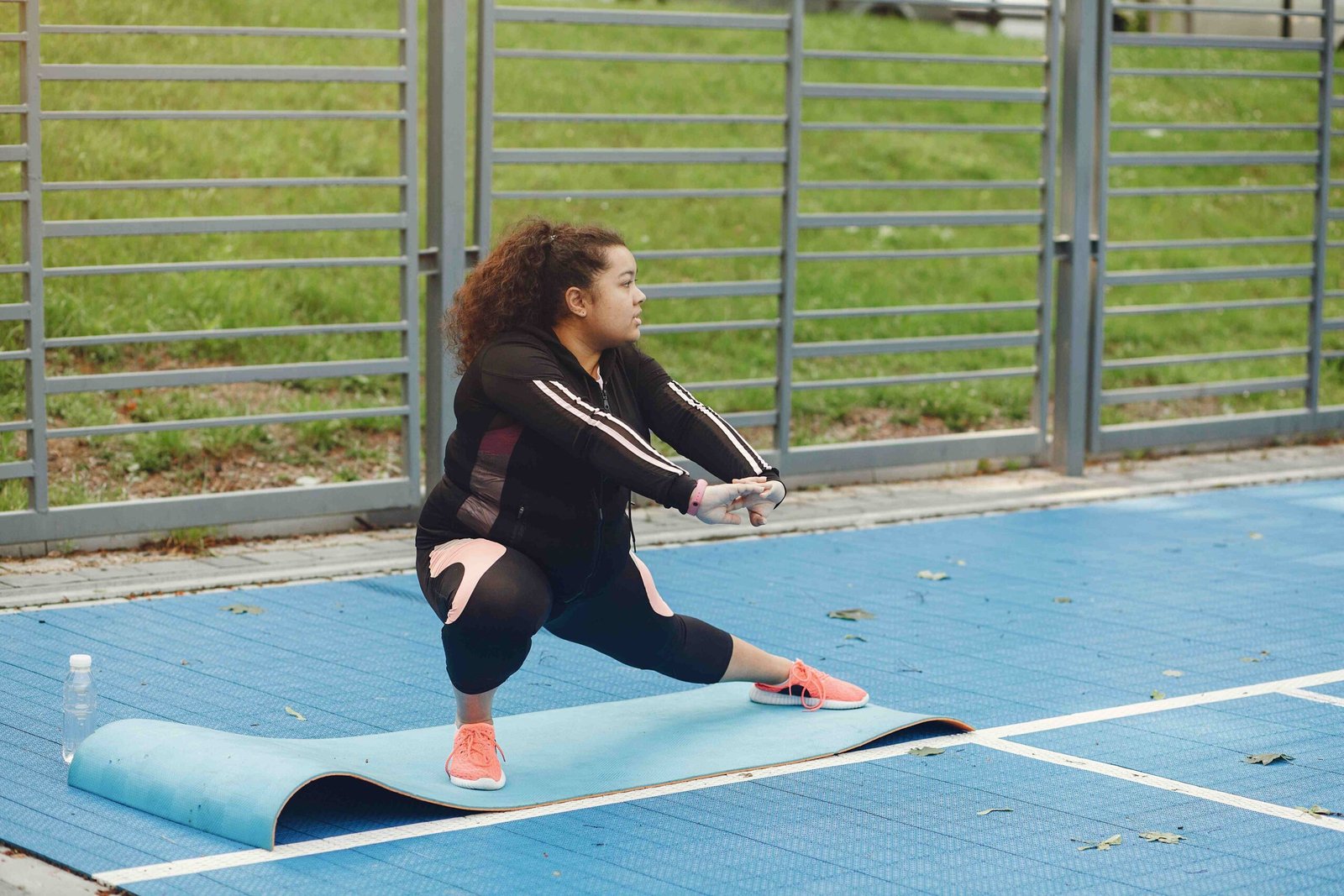When athletes step onto a sports floor, they expect it to be perfectly flat, stable, and ready for action. A floor that curls, buckles, or shifts underfoot not only disrupts play but also increases the risk of serious injuries. That’s why surface stability and deformation resistance are critical performance indicators for any indoor sports flooring system.
The core concern for facility owners and managers is simple yet vital:
“Will the panels or rolls remain flat and stable without curling, buckling, or expanding/contracting with changes in temperature and humidity?”
Sports flooring isn’t just about aesthetics—it’s about long-term consistency . A floor that remains dimensionally stable ensures safe play, accurate ball bounce, and smooth athlete movement. Conversely, a floor that warps or deforms compromises both performance and investment.
This blog explores what surface stability means, why deformation resistance matters, the environmental and usage factors that challenge stability, the science behind high-quality flooring systems, and how to ensure your facility gets a reliable surface that lasts.
What Is Surface Stability in Sports Flooring?
Surface stability refers to the ability of a sports floor to stay flat and secure under all conditions. It ensures that the floor:
- Lays evenly without curling edges or bubbles.
- Resists buckling under temperature or humidity changes.
- Maintains its form under heavy loads and athletic stress.
- Provides a uniform surface for safe and consistent play.
Deformation resistance, meanwhile, is the floor’s ability to withstand physical stress—whether it’s constant foot traffic, dropped equipment, or environmental changes—without altering its structure. Together, these qualities ensure a floor remains both functional and professional-looking over time.
Why Surface Stability and Deformation Resistance Matter
1. Athlete Safety
Uneven or warped surfaces create tripping hazards. Even slight buckling or curling can lead to twisted ankles, falls, and long-term joint injuries.
2. Performance Consistency
Athletes rely on predictable footing and ball bounce. A deformed floor interrupts gameplay, reducing fairness and precision in competitive sports.
3. Longevity of Investment
Unstable surfaces require costly repairs or premature replacements. A stable, deformation-resistant floor maximizes lifespan and return on investment.
4. Facility Versatility
Multi-purpose facilities host various sports and events. A floor that holds up under diverse conditions ensures seamless transitions between activities.
5. Professional Image
For schools, gyms, or professional arenas, warped floors project poor management. A consistently stable floor enhances both athlete and spectator confidence.
The Main Challenges to Surface Stability
Sports flooring systems face numerous stresses that threaten their dimensional integrity.
- Temperature Fluctuations Materials expand in heat and contract in cold. If not engineered properly, this leads to gaps, bulges, or buckling.
- Humidity and Moisture Wood floors swell in humid environments and shrink in dry conditions, creating warping. Even vinyl or polyurethane surfaces may deform if subfloor moisture seeps upward.
- Improper Installation Uneven subfloors, poor adhesives, or incorrect spacing during installation increases the likelihood of curling or shifting over time.
- Heavy Equipment and Traffic Constant foot traffic and the movement of equipment like bleachers or basketball hoops can strain the surface and cause indentation or panel displacement.
- Aging and Material Fatigue Over years of use, materials naturally lose elasticity or cohesion, leading to curling edges and surface instability.
Factors That Influence Stability and Deformation Resistance
1. Material Composition
- Hardwood Floors – Susceptible to humidity-driven expansion and contraction; require climate control.
- Vinyl Sports Flooring – Engineered with stable polymers and wear layers; highly resistant to warping or curling.
- Polyurethane Floors – Seamless and bonded to the subfloor, minimizing movement or curling.
- Rubber Floors – Naturally resilient and deformation-resistant, ideal for weight rooms.
2. Wear Layer Thickness
Thicker wear layers in vinyl or synthetic floors help resist curling, indentation, and expansion.
3. Reinforcement Technology
High-quality floors use glass fiber or mesh reinforcements that provide dimensional stability across large surface areas.
4. Subfloor Design
A strong, even, and moisture-resistant subfloor is essential for preventing curling or buckling of the surface material.
5. Installation Quality
Proper adhesives, accurate seam sealing, and allowances for thermal expansion make the difference between a stable floor and one prone to issues.
Testing Standards for Stability and Resistance
Reputable manufacturers test their flooring against international standards to ensure performance:
- Dimensional Stability Test – Measures expansion/contraction under temperature and humidity changes.
- Curling Resistance Test – Evaluates whether sheet or tile edges remain flat after prolonged stress.
- Indentation Resistance Test – Tests how well the floor recovers after heavy loads are applied.
- Moisture Resistance Test – Ensures materials withstand exposure to humidity or spills without swelling.
Floors certified by FIBA, BWF, ITTF, EN, or ASTM standards have proven their resistance to deformation under global conditions.
Comparing Flooring Types for Stability
| Flooring Type | Stability Strengths | Stability Challenges |
|---|---|---|
| Hardwood | Traditional performance; strong subfloor systems | Expands/contracts with humidity; needs climate control |
| Vinyl / PVC | High dimensional stability; reinforced layers resist curling | May deform under extreme heat if poorly installed |
| Polyurethane | Seamless surface; bonded installation eliminates curling | Requires precise installation; difficult to repair in sections |
| Rubber | Naturally stable, moisture-resistant | Limited use for ball sports due to rebound differences |
The Role of Environmental Control
Even the most advanced flooring benefits from stable indoor conditions:
- Temperature Range: 18–25°C is ideal for sports flooring.
- Humidity Levels: 35–55% relative humidity prevents wood warping and adhesive failures.
- Ventilation: Adequate airflow reduces moisture buildup.
Facilities without proper HVAC systems often see premature warping, proving that environmental stability is as important as material quality.
Innovations Enhancing Stability
Manufacturers like Boker Sports Flooring integrate technologies to enhance deformation resistance:
- Fiberglass Reinforced Layers – Prevent stretching or shrinking.
- Multi-Layer Vinyl Construction – Balances flexibility with dimensional control.
- Moisture-Proof Backing Systems – Block subfloor moisture from causing swelling.
- Seamless Polyurethane Applications – Create monolithic surfaces that resist curling entirely.
These innovations set new benchmarks for reliable sports flooring.
Maintenance Practices to Preserve Stability
Even the most deformation-resistant floor benefits from good care:
- Routine Cleaning – Prevents dirt buildup that may degrade adhesives or coatings.
- Moisture Management – Promptly address spills and leaks to avoid swelling.
- Equipment Protocols – Use protective pads and wheeled carts instead of dragging heavy objects.
- Inspection Schedules – Regular checks catch early signs of curling or bubbling before they worsen.
- Climate Monitoring – Use hygrometers and thermostats to maintain stable conditions.
Consequences of Poor Stability
Ignoring surface stability and deformation resistance results in:
- Safety Hazards – Raised edges or bubbles cause tripping and slipping.
- Inconsistent Performance – Uneven surfaces disrupt ball bounce and athlete movement.
- High Maintenance Costs – Frequent repairs or premature replacement drain facility budgets.
- Damage to Reputation – Players, coaches, and spectators notice when a floor isn’t up to standard.
Choosing the Right Floor for Long-Term Stability
Facility managers should ask:
- Does the floor include reinforced layers for dimensional stability?
- Is it certified for deformation resistance under international standards?
- Can the material withstand the specific environmental conditions of the facility?
- What warranties and performance guarantees does the manufacturer provide?
- Is the subfloor properly prepared and moisture-proofed?
By addressing these questions, decision-makers ensure they select a floor that stays flat, safe, and consistent for years.
Real-Life Applications
- Professional Basketball Arenas – Require wood systems with precise humidity control to prevent expansion.
- School Gyms – Often rely on vinyl flooring for its reinforced stability and minimal maintenance.
- Community Halls – Multi-purpose venues prefer polyurethane or vinyl systems that resist curling under varied activities.
- Weight Rooms – Rubber surfaces excel, offering unmatched deformation resistance under heavy loads.
Conclusion
Surface stability and deformation resistance are the foundations of reliable sports flooring. A floor that stays flat, resists curling, and withstands environmental fluctuations provides:
- Athlete safety by eliminating trip hazards.
- Consistent play through uniform ball bounce and smooth movement.
- Long-term savings by minimizing premature repairs and replacements.
- Professional image that inspires confidence among players and spectators alike.
When evaluating sports flooring, never overlook these attributes. The right choice ensures your facility delivers not only on day one but for many years to come—no matter the temperature, humidity, or intensity of use.
Stable surfaces are more than a technical requirement—they are the guarantee of performance, safety, and lasting value .



